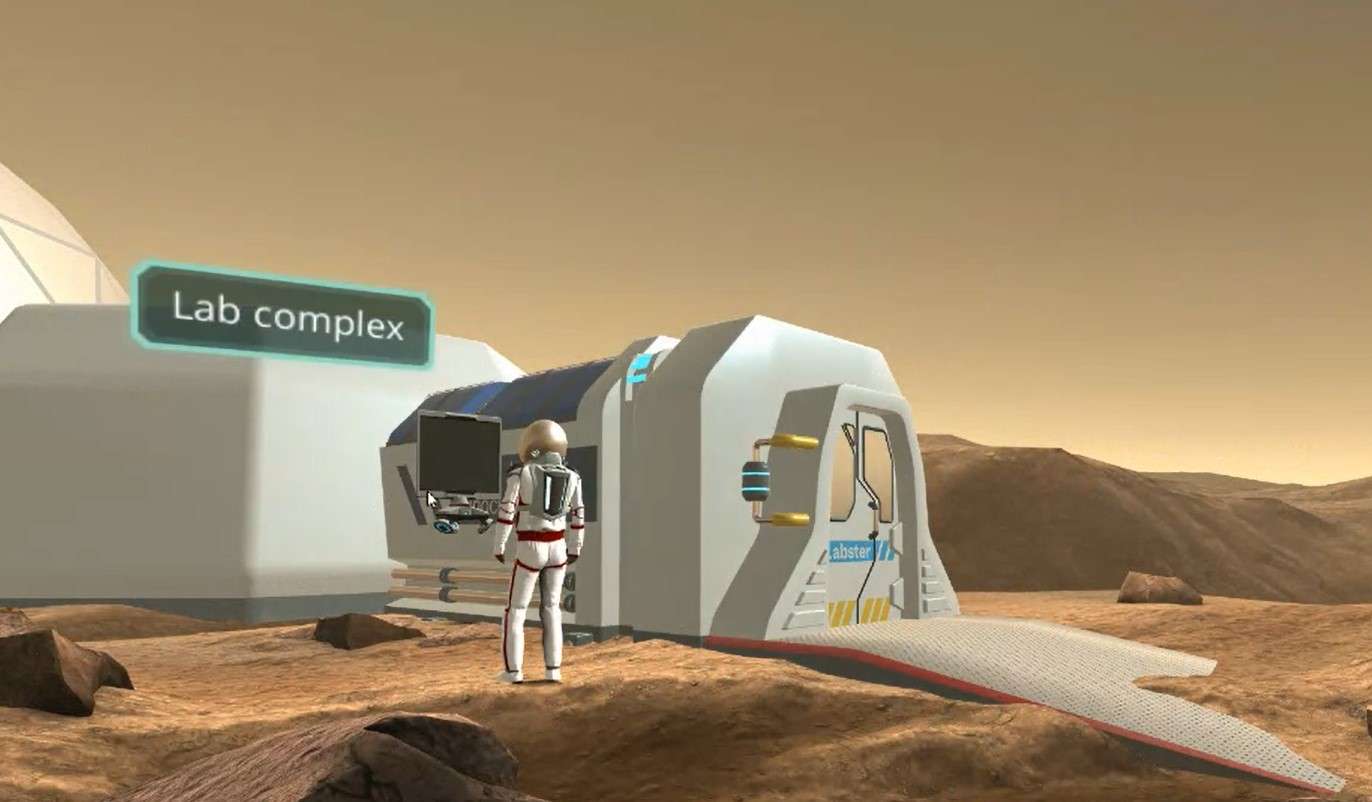Heading 1
Heading 2
Heading 3
Heading 4
Heading 5
Heading 6
Lorem ipsum dolor sit amet, consectetur adipiscing elit, sed do eiusmod tempor incididunt ut labore et dolore magna aliqua. Ut enim ad minim veniam, quis nostrud exercitation ullamco laboris nisi ut aliquip ex ea commodo consequat. Duis aute irure dolor in reprehenderit in voluptate velit esse cillum dolore eu fugiat nulla pariatur.
Block quote
Ordered list
- Item 1
- Item 2
- Item 3
Unordered list
- Item A
- Item B
- Item C
Bold text
Emphasis
Superscript
Subscript
About This Simulation
Use the technique of simple distillation to help your colony on Mars purify the waste generated by the production of biodiesel from algae (water, glycerol, and methanol).
Learning Objectives
- Explain the application of the distillation technique
- Calculate the mole % composition of a mixture
- Describe how the mole % composition of the mixture changes as the distillation proceeds
- Set up a simple distillation experiment and describe the function of the different components
- Justify the correct assembly of the cooling system and the location of the thermometer
- Interpret boiling point composition curves and temperature vs. volume plots
- Understand the dependency of the boiling temperature on the atmospheric pressure
- Explain when to use simple or fractional distillation and why
About This Simulation
Lab Techniques
- Simple distillation
Related Standards
- Alignment pending
- Alignment pending
- Alignment pending
Learn More About This Simulation
Resources in your new colony on Mars are limited, so anything you can do to convert waste into a useful product can be a life-changer.
In this simulation, your mission is to use the distillation technique to separate and recycle the waste compounds generated by the production of biodiesel from algae (water, glycerol, and methanol) so they can be reutilized.
Set up the distillation equipment
Start by setting up the equipment correctly. Every part of the apparatus has a function and needs to be assembled properly for the experiment to be successful. Make sure everything is in the right place before you start the experiment.
Follow the distillation experiments in real time
Once you start the distillation, you will be able to follow the temperature versus volume plot in real time. You will need to collect different samples during the experiment and Dr. One will provide you the boiling point composition curves so you can understand what is happening during the distillation process in both the distillation apparatus and the collection flasks.
Analyze your results. Did you complete your mission?
Look at your data and reflect about your results. Were you able to separate the three components from your sample? Are there any other experiments you can do to further optimize the mixture separation?
Boost STEM Pass Rates
Boost Learning with Fun
75% of students show high engagement and improved grades with Labster
Discover Simulations That Match Your Syllabus
Easily bolster your learning objectives with relevant, interactive content
Place Students in the Shoes of Real Scientists
Practice a lab procedure or visualize theory through narrative-driven scenarios


For Science Programs Providing a Learning Advantage
FAQs
Find answers to frequently asked questions.
Heading 1
Heading 2
Heading 3
Heading 4
Heading 5
Heading 6
Lorem ipsum dolor sit amet, consectetur adipiscing elit, sed do eiusmod tempor incididunt ut labore et dolore magna aliqua. Ut enim ad minim veniam, quis nostrud exercitation ullamco laboris nisi ut aliquip ex ea commodo consequat. Duis aute irure dolor in reprehenderit in voluptate velit esse cillum dolore eu fugiat nulla pariatur.
Block quote
Ordered list
- Item 1
- Item 2
- Item 3
Unordered list
- Item A
- Item B
- Item C
Bold text
Emphasis
Superscript
Subscript
Labster can be integrated within a school's LMS (Learning Management System), and students can access it like any other assignment in their LMS. If your Institution does not choose an LMS integration, students will log in to Labster's Course Manager once they have an account created. Your institution will decide the access method during the sales process.
Labster is available for purchase by instructors, faculty, and administrators at education institutions. Purchasing our starter package, Labster Explorer, can be done using a credit card if you are located in the USA, Canada, or Mexico. If you are outside of North America or are choosing a higher plan, please speak with a Labster sales representative. Compare plans.
Labster simulations are created by real scientists and designed with unparalleled interactivity. Unlike point and click competitors, Labster simulations immerse students and encourage mastery through active learning.
Labster supports a wide range of courses at the high school and university level across fields in biology, chemistry and physics. Some simulations mimic lab procedures with high fidelity to train foundational skills, while others are meant to bring theory to life through interactive scenarios.


















